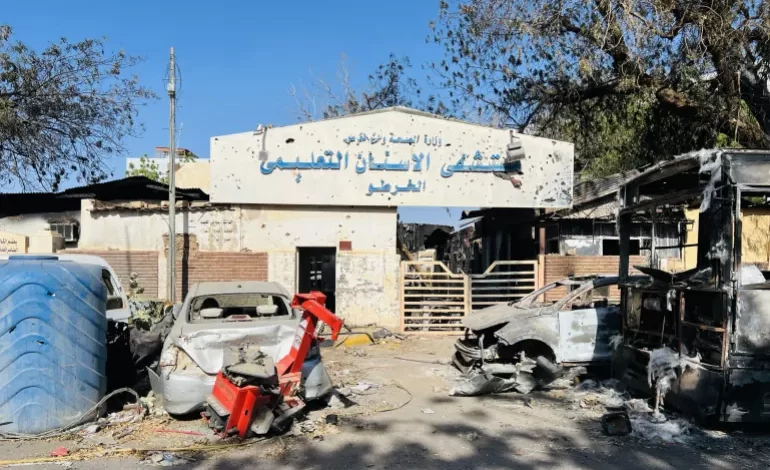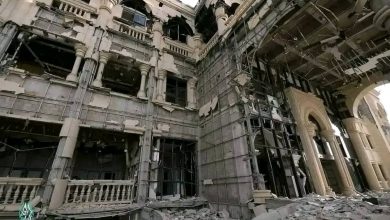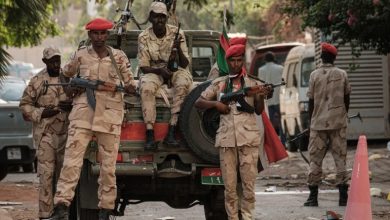Two Years of War in Sudan: A Statistical Overview

After two years of war in Sudan, the human and material toll continues to mount, affecting all aspects of life, casting a shadow over the Sudanese people, and forcing millions to flee either internally or across borders.
Al Jazeera Net presents a numerical breakdown of the ongoing war, which began in mid-April 2023 in the capital Khartoum, before spreading to the states of Al Jazirah, Sennar, North White Nile, and South Blue Nile, and then receding into North, West, and South Kordofan and the Darfur region.
Conflicting Death Toll Figures
Sudan’s Ministry of Health has documented the deaths of 12,000 civilians who reached hospitals—representing only 10% of the total estimated war fatalities.
The International Rescue Committee estimates the total death toll at 150,000, which far exceeds the United Nations’ figure of approximately 20,000.
In November, the London School of Hygiene and Tropical Medicine reported over 61,000 deaths in Khartoum alone from the start of the conflict until June—an increase of nearly 50% compared to pre-war mortality rates. Of these, 26,000 deaths were due to direct war-related violence.
Displacement and Refugees
Marking two years of conflict, the International Organization for Migration (IOM) announced last week that the war has displaced more than 11.3 million people.
The country has witnessed large-scale internal displacement, with 8.6 million people forced to leave their homes, while another 3.9 million fled across borders—mostly into neighboring countries.
Mohamed Rifaat, head of IOM’s mission in Sudan, stated that around 2.1 million people are expected to return to Khartoum in the next six months. Displaced persons from Khartoum account for 31% of all internal displacement cases.
Damage to Services
The Ministry of Health reported that the healthcare sector has suffered damages totaling nearly $11 billion.
Out of 750 hospitals nationwide, 250 have gone out of service due to destruction and looting of equipment, depriving millions of basic medical care.
An official report states that 70% of hospitals and health centers in Khartoum, Darfur, and Kordofan have ceased functioning. Additionally, over 60% of pharmacies and medical supply stores have been rendered inoperative due to looting or destruction.
Education Sector
In higher education, an official report reviewed by Al Jazeera Net revealed that around 120 public and private universities and colleges—mostly in Khartoum and serving nearly half a million students—have lost almost all of their infrastructure. Six universities in other states, including four in Darfur, have also been destroyed or heavily damaged.
In basic education, the war has displaced over 17 million children from their schools, adding to the 6.9 million who were already out of school before the war began. Some schools have resumed activities in safe areas under army control, including Khartoum, Al Jazirah, Sennar, parts of North Kordofan, and White Nile State.
Violence and Missing Persons
UN expert on human rights in Sudan, Radhouane Nouicer, stated that precise figures for the number of missing persons remain unavailable due to discrepancies between sources.
However, the Sudanese Group for the Defense of Rights and Freedoms estimates the number of missing persons at 50,000. Local human rights organizations have documented at least 3,177 cases, including over 500 women and 300 children.
Regarding sexual violence, Sudan’s governmental Unit for Combating Violence Against Women recorded 1,138 cases of rape in RSF-controlled areas from the start of the war to February, including 193 cases involving underage girls.
In March, UNICEF reported 221 documented cases of child rape since the beginning of last year, including four infants as young as one year old.
Economic Losses
According to a recent government-led study, the war has inflicted an estimated $108 billion in damages to Sudan’s economy.
The Ministry of Agriculture and Forestry estimated losses in the agricultural sector at over $10 billion over two years, due to looting and destruction of capital assets, including machinery and research stations.
A separate report revealed that 90% of the industrial sector has been impacted by the war, mainly due to looting and deliberate destruction by RSF forces. This includes damage to 3,493 industrial establishments—medium and large-sized—in Khartoum, South Kordofan, and Al Jazirah. The sector employs over 250,000 workers, and the estimated losses reach $30 billion.
Public infrastructure in the civil aviation sector—including airports, aircraft, ground support equipment, control towers, passenger terminals, and cargo warehouses—suffered damages estimated at $3 billion.
In the electricity and water sectors, water stations in the capital and states have been looted or destroyed, along with numerous power generation units and transmission facilities. Losses in this sector are estimated at $10 billion.
Losses to public infrastructure across ministries and institutions—including government buildings, ministries, bridges, and roads—are also estimated at around $10 billion.



